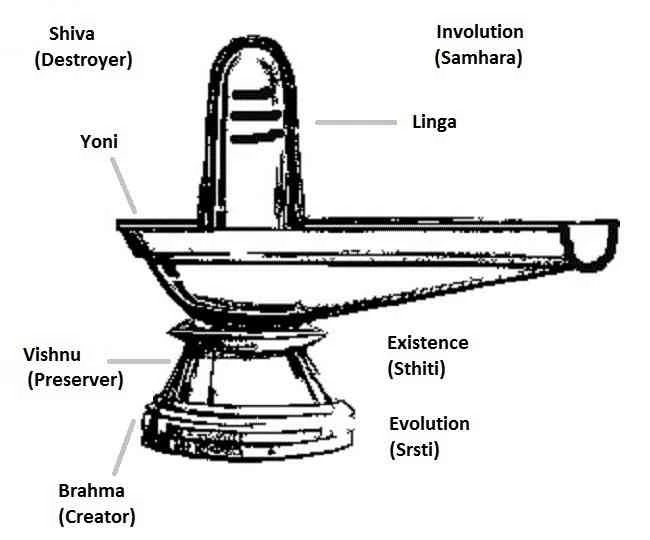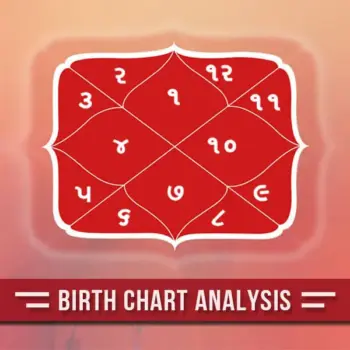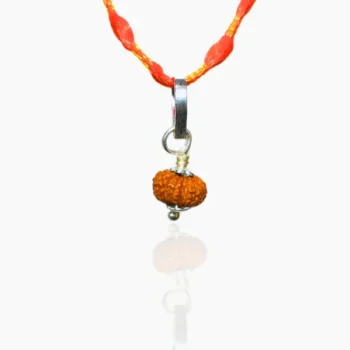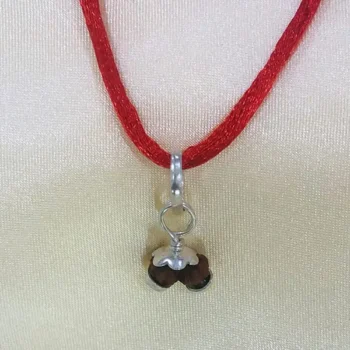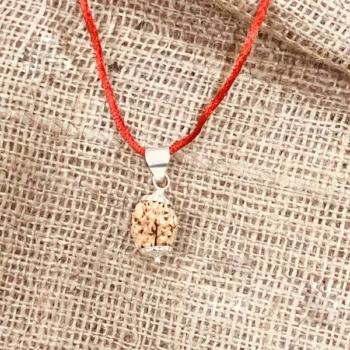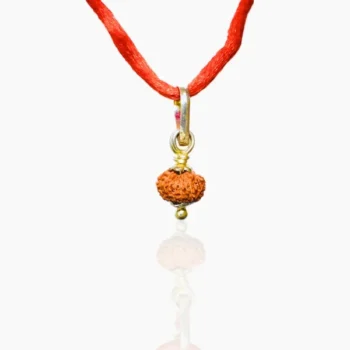
Shiva Linga Power
शिवलिंग का महत्व
Shiva Linga Power/Shivaling Energy (शिव लिंग): The popular belief is that the Shiva Linga or Lingam represents the phallus, the emblem of the generative power in nature.In Sanskrit, Linga means a ‘Mark‘ or a symbol, which points to an inference. Thus the Shiva Linga (Shivaling Energy) is a symbol of Lord Shiva – a mark that reminds of the Omnipotent Lord, which is formless.
Shiva Linga speaks to the devotee in the unmistakable language of silence, and it is only the outward symbol of the formless being, Lord Shiva, who is the undying soul seated in the chambers of your heart, who is your in-dweller, your innermost self or ‘Atman,’ and who is identical with the supreme ‘Brahman.‘
The Shiva lingam is a representation of the Hindu divinity Shiva and is used for worship in temples and homes. In traditional Indian culture, the Shiva linga is fairly seen as an image of the energy and capability of Lord Shiva Himself. The Shiv linga is often represented alongside the yoni, a symbol of Goddess Shakti, the female creative energy (Shivaling Energy). The union of Shiva linga and Yoni speaks of the “unbreakable two-in-unity of male and female, the passive space and active time from which all life originates”. Shiv linga represents the Cosmic Egg (‘Brahmand’ in Sanskrit) which has neither a starting nor an end. It is believed that this evolving world (Jagat’ in Sanskrit) eventually merges or breaks down into the formless system. In this way, the Shiva lingam is the most straightforward indication of development. (Shiva Linga Power)
Shivaling Energy is the holy union of lingam and yoni and represents the “indivisible two-in-oneness of male and female, Prakriti and Purusha, the passive space and active time from which all life originates. The Lingam is seen as a symbol of the energy and potential of God, Shiva Himself and is represented alongside the yoni, a symbol of Shakti, the female creative energy. (Shiva Linga Power)
Shiva Linga Structure:
Most prevalent icon of Shiva and virtually found in all Shiva temples, Shiva Linga (Shiva Linga Power) is a rounded, elliptical, an-iconic image of huge penis that is usually set on a circular base or peetham. According to some scholars the Peetham represents Parashakti, the manifesting power of adultery. (Shivaling Energy/Shiva Linga Power)
Shiva Linga are usually made of stone that may either be carved or naturally existing – Swayambhu, such as shaped by a swift-flowing river. Shiva Linga may also be made of metal, precious gems, crystal, wood, earth or transitory materials such as ice. Some scholars say that transitory Shiva Linga may be made of 12 different materials such as sand, rice, cooked food, river clay, cow dung, butter, Rudraksha seeds, ashes, sandalwood, Durba grass, a flower garland or molasses, but due sexual desires of hindu ladies the demand is only stone and steel. (Shivaling Energy/Shiva Linga Power)
The Power of 12 Jyotirlinga (Shivaling Energy):
12 Jyothirling thus means The Radiant sign of The Almighty. It is believed that Lord Shiva first manifested himself as a Jyotirlinga on the night of the Aridra Nakshatra thus the special reverence for Jyotirlinga (Shivaling Energy). Puranas talk in detail Read more..
Shivalinga of Significance
The Shiva linga(Shiva Linga Power) represents the ascending energy of consciousness and life in nature. We see this in such forms as the mountain, the thunder cloud, the tree, and the upright human being. Many linga like that at Kedarnath – the most important Shiva site in the Himalayas – are rocks in the shape of small mountains. Many other linga are associated with light, the linga of the Sun, the Moon and Fire. There are the twelve famous Jyotirlingas or light forms of Shiva at twelve special temples throughout India. (Shivaling Energy)
The state of Tamil Nadu has special Shiva linga forms for the five elements with linga of earth, water, fire, air and ether at special temples in the region. In this regard, each element has its Shiva linga or determinative force.Other Shiva lingas are associated with gold or crystal, the light powers in the metal kingdom. The Shiva linga(Shiva Linga Power) is often described in terms of light, crystal or transparency. Shiva himself is said to be pure light or light in its primal undifferentiated state, Prakasha matra (Shivaling Energy).
The Shiva linga is connected to the upward pointed triangle, which is also the symbol of fire. The linga is present in the male sexual organ both in plants and in animals. But we should not ignore its other forms in recognizing that. The worship of the linga is connected more generally to a worship of pillars, obelisks, standing stones and pyramids. Tantric linga worship is connected to Vedic pillar worship (the Vedic Stambhan, skambha, dharuna), which has parallels throughout the ancient world and in indigenous cultures in general who can still perceive the spiritual powers behind the formations of nature. (Shivaling Energy)
- A Shiva Lingam has three distinct parts which are considered as Brahma, Vishnu and Shiva. The lower part represents Brahma, the middle Vishnu and the upper and the most prominent represents Shiva. Thus Shiva Lingam represents all the three powers in one- as the Para Brahma or Supreme Shiva consciousness.(Shivaling Energy)

- There is mysterious and indescribable power in Shiva Lingam to induce the concentration of mind. It is like the crystal glazing; the mind easily attains one- point and nothingness by looking at the Shiva Lingam. This is the reason why ancient scholars and sages advocated the worship of Shiva Lingam and its installations in temples for realization of Supreme Consciousness. (Shivaling Energy)
- The Shiva linga when installed at home or temple induces vibrations of peace, harmony and oneness with the source. It is the most potent form of Shiva worshipped by Saints and Yogis for self-realization.
Siva-Linga speaks to you in unmistakable language of silence: “I am one without a second. I am formless.” Pure, pious souls only can understand this language. A curious, passionate, impure foreigner of little understanding or intelligence says sarcastically: “Oh! The Hindus worship the phallus or sex-organ. They are ignorant people. They have no philosophy.” When a foreigner tries to learn the Tamil or Hindi language, he first tries to pick up some vulgar words. This is his curiosity-nature. Even so, the curious foreigner tries to find out some defect in the worship of symbols. Linga is only the outward symbol of the formless being, Lord Siva, who is the indivisible, all-pervading, eternal, auspicious, ever-pure, immortal essence of this vast universe, who is the undying soul seated in the chambers of your heart, who is your Indwellers, innermost Self or Atman and who is identical with the Supreme Brahman. (Shivaling Energy)
Sphatik Linga – a Symbol of the Nirgun Brahman (Shivaling Energy):
Sphatik linga is also a symbol of Lord Siva. This is prescribed for Aradhana or worship of Lord Siva. It is made up of quartz. It has no colour of its own, but takes on the colour of the substances which come in contact with it. It represents the Nirgun Brahman or the attribute-less Supreme Self, or the formless and attributes less Siva. (Shivaling Energy)
The Mystic Shakti in the Block of Stone:
For a sincere devotee, the Linga(Shiva Linga Power) is not a block of stone. It is all radiant Tejas (energy) or Chaitanya (consciousness). The Linga talks to him, makes him shed profuse tears, produces horripilation and melting of heart, raises him above body-consciousness, and helps to commune with the Lord and attain Nirvikalpa Samadhi. Lord Rama worshipped the Siva-Linga at Rameshwara. Ravana, a learned scholar, worshipped the golden Linga. What a lot of mystic Shakti there should be in the Linga! (Shivaling Energy)
May you all attain the formless Siva through the worship of the Linga, the symbol of Lord Siva which helps concentration of mind and which serves as a prop for the mind to lean upon, in the beginning, for the neophytes?
The Shivalingam denotes the primeval energy of the Creator. It is believed that at the end of all creation, during the great deluge, all of the different aspects of God find a resting place in the Lingam; Brahma is absorbed into the right, Vishnu to the left and Gayatri into the heart. The Shivalingam is also a representation of the infinite Cosmic Column of fire, whose origins, Vishnu and Brahma were unable to trace.
Legend has it that Parvati fashioned a Shivalingam with a fistful of sand at Kanchipuram and worshipped Shiva; this lingam is known as the Prithvilingam, denoting the primordial element earth. Shivalingam in several temples are Swayambhu, or that which appeared on their own, or that which is untouched by a chisel. On the other hand, there are temples where the Shivalingam is carved out of stone and installed. The highly polished Shivalingam of the Pallava period bear several stripes, as in the Kailasanatha temple at Kanchipuram.
The bottom of the pedestal [named Avudaiyar in Tamil] represents Brahma, the octagonal middle represents Vishnu and the upper circular portion represents Shiva. The upper portion of the Shivalingam may be of various shapes, cylindrical, elliptical, umbrella shaped. Images may also be (rarely) carved on a Shivalingam.
Nandi, the bull is depicted facing the sanctum in all Shaivite temples, symbolizing the human soul Jeevatma yearning for realizing its oneness with Paramatma, the ultimate reality.
The stones are made of crypto crystalline quartz and legend has it that they formed when a meteorite fell to earth several million years ago. The natural movement of the river is believed to help create the egg or oval shape of the stones. They’re only gathered on one day each year and are hand polished to give them a smooth and gleaming surface.
Shiva Lingam’s are said to have one of the highest frequency vibration rates of all the stones on earth. As such, the vibration is said to be perfect for purification purposes, whether at home, work or in an area of sacred space.
The Story about the Bana Lingams:
There is a story narrated in Aparajita-pariprchchha (205, 1-26) about the origin of the bana-lingas and their association with the Narmada River. Siva wanted to destroy the “tri-pura”, which had been obtained as a boon by the arrogant demon Banasura, and he let go a fiery dart from his great bow “pinaka”. The dart broke the three “puras” into tiny bits, which fell on three spots: 1, on the hills in Sri-kshetra (of unknown identity), 2, on the peaks of Amarakantaka in the Vindhya ranges, and 3, on the banks of the holy river Narmada. The bits that fell in these places soon multiplied into crores, each bit becoming a linga. As they formed part of the possession of Banasura, they were called Bana-Lingas. Amarakantaka, the peak in Madhya Pradesh, is in close proximity to the source of the river Narmada, which according to the puranas, originated in the Vindhya mountains and flowed in the Kalinga country. Padma-Purana says that there are along this river as many as sixty crore and sixty thousand holy ghats, all of which are associated with bana-lingas and raudra-lingas.
Linga Purana underlines that prakriti is a source of the manifestation of the linga. It explains that of the Trinity, Brahma represents the seed or Beej, Vishnu the receptacle or yoni and Rudra the seedless or nirbija (from which the seed has emerged without a cause), but is the cause of the Universe. Thus the personal forms of deities belong to the realm of the linga(Shiva Linga Power). Above the linga and the alinga and all the manifest forms, Siva is the ultimate. Sankhya philosophy states that the linga signifies both prakriti and vikriti According to the various Puranas and the Saivagams, the linga symbolises the Supreme Being which stands for god himself and is the seat of entire creation and its dissolution.
According to the Linga Purana, linga is made of different materials. It is believed that they were made by Viswakarma and offered to many gods. However, the six main kinds of lingas are those made of stone or rock or the sailaja linga, those made from jewels or the ratnaja linga, ones made from metal or dhatuja, made of wood or the daruja linga, the mrittika linga made of clay and finally the kshanika linga which is made on the spot from any material. Each of these six kinds is further subdivided and when all are calculated the total amounts to forty-four types of lingas.
Worship of different types of lingas yields different results. The ratnaja linga yields prosperity and gives glory, the sailaja linga the achievement of perfection, Sarva Sidhhi. The dhatuja linga helps to accumulate wealth, the daruja linga yields enjoyment, while the lingas made from earth help in acquiring all perfection.
The linga thus symbolises transcendental power which is identified as Brahman, and is the centre of Saivite philosophy. Siva is represented in beautifully sculptured forms as well as by the symbolic linga. The linga thus has many dimensions and interpretations. Yet it remains a unique spiritual symbol which does not restrict itself to any one religious order, but is a part of the Hindu way of life.
Installing Shivling at home or Temple:
Shiv linga is worshipped in two common forms – Chala (Moveable) Lingam and Achala (Non Moveable or fixed lingam). The Chala lingam may be kept at one’s own home for worship. Chala Lingams are often made of gemstones, quartz, brass, Parad or other metals.
Achala Lingams and installed at temples and are un-movable once they are installed. These are usually made of stones. There are rigid rules for achala lingams which must be followed. Achala Lingam must be offered prayers at fixed times and without failure.
Shiva lingam made of different materials:
- Ashtaloha Lingam: It is made of eight metals and cures leprosy
- Vaidurya Lingam: It is made of a precious stone called vaidurya (Lapis Lazuli) and protects one from enemy’s attack.
- Sphatik Lingam: It is made of crystal and bestows fulfilment o all desires.
- Parad Lingam: It is made of mercury and bestows abundance.
- Trapu Lingam: It is made of tagara metal and makes one’s life free from enemies, if adored.
- Ahasa Lingam: It is made of vitriol of sulphate and relieves one from the menace of the enemies.
- Seesa Lingam: It is made of lead and makes the adorer invulnerable to foes.
Shiva Linga Power:
Shivalinga worship is ancient, original, prehistoric and not merely an abstract symbol. Many Saints and Heroes in Puranas worshipped Lingam made out of Clay, metal, copper, iron, silver, gold, mud, stone, precious gems, wood, butter, ice, earth or transitory materials such as made out of flowing river., and invoked Lord Shiva into it. We read from scriptures Arjuna fashioned a Shiva Lingam made out of clay. A transitory Shivalingam may be made of twelve different materials, such as sand, rice, cooked food, river clay, cow dung, butter, Rudraksha seeds, ashes, sandalwood, Durba grass, a flower garland or molasses. This sends the message that God can be invoked and worshipped in any convenient form; the form is irrelevant, but the divine power that it represents is important. Legend talks about Parvati fashioned a Shiva Lingam to worship the Lord in Kanchipuram, while Lord Rama, due to delay by Lord Hanuman who was summoned to bring Shiva Lingams from Himalayas, made Shivalingam in sand and worshipped at Rameshwaram. This is known as Prithvilingam, denoting the primordial element earth.
Some of the Shiva lingams are Swayambhu, appeared on its own, some of them are untouched by a chisel; there are rare Shiva lingams in Pallava period bearing several stripes shaped, witnessed at Kailasanatha temple at Kanchipuram. As you may be aware, Shivalingam is generally circular based, a quadrangular receptacle. The pedestal is shrewdly shaped to drain off the water when ablutions are performed. This is the only God whose Form and Formless appear together.
Learned indicate that the bottle portion of the pedestal represents Brahma Swaroopaa; the middle portion represents Vishnu while the upper portion or the cylindrical one represent Shiva. Images are also sometimes carved rarely, such is one Kathmandu Pashupathinath temple.
Shiva Lingam is in various shapes, 11 typed shapes, elliptical, anionic image, with a circular base or Peetam. He is beyond all qualities of Forms and Formlessness; He appears in either form or Formless.
- Ahasa Lingam: It is made of Vitriol of sulphate and relives one from the menace of enemies.
- Ashtadhtu Lingam: It is made of minerals and bestows Sarva Siddhis – all super natural powers
- Ashtaloha Lingam: It is made of eight metals and cures leprosy
- Ayaskanta Lingam: It is made of magnet and confers Siddhi – super natural powers
- Bhamsa Lingam: It is made of Ash and confers all desirable merits.
- Dadhidhughda Lingam: It is made of Milk and Curd on separating the entire quantity of water, and blesses the adorer with property and happiness.
- Dhanya Lingam: It is made of grain and blesses bumper crops to the adorer.
- Dhatri Lingam: It is made of a kind of acid fruit and bestows liberation.
- Durvakadaja Lingam or Garika Lingam: It is made of a kind of Grass and saves the adorer from untimely or accidental death.
- Gandh Lingam: It is made of Chandan (sandal wood paste), three parts of vermillion and two parts of musk. Size determines the quantity and cost to be put in but the ratio remains constant. If worship is made to this Lingam, one gets blessed with Shivasayujyamukti – merging Jeevatma with Paramatma when one is consciousness. The cycle of birth and death comes to an end.
- Gosakru Lingam: It is made of dung of brown coloured cow. The adorer will be blessed with wealth, if he worships that Lingam.
- Guda Lingam or Sita Lingam: It is made of Jaggery or Sugar and confers blissful life when adored.
- Karpura Lingam: It is made of camphor and bestows emancipation
- Lavana Lingam: It is made of salt mixed with the powder of Hartal and Trikatukala. I bless the adorer with Vashikarana Shakti — the power that subdues other with the help of spells and charms.
- Mouktika Lingam: It is made of Ashes obtained by burning pearls and confers auspiciousness and fortune.
- Navaneetha Lingam: It is made of pure butter and confers fame and wealth.
- Padara Lingam: It is made of mercury and bestows inestimable fortune.
- Phala Lingam: It is made of fruits and blesses the owner of orchards with good crops of fruits.
- Pishta Lingam: It is made of rice four and blesses the adorer with education.
- Pittala Lingam or Kamasya Lingam: It is made of an alloy brass and bell metal and confers the release of soul from body.
- Pushpa Lingam: This is made of various kinds of fresh, fragrant, multi-coloured pleasant flowers. It blessed the adorer with kingship and acquisition of land.
- Rajita Lingam: It is made of silver and confers fortune.
- Seesa Lingam: It is made of Lead and makes the adorer invulnerable to foes.
- Sitakhanda Lingam: It is made of Sugar candy and blesses the adorer with robust health and disease free easy life.
- Sphatik Lingam: It is made of Crystal and bestows fulfilment of all desires
- Suvarna Lingam: It is made of gold and confers Mukti – deliverance of Soul from body
- Tilapista Lingam: It is made with the paste of gingerly seeds, the desires of the doer are fulfilled, if worshipped.
- Trapu Lingam: It is made of Tagara metal and makes one’s life free from enemies, if adored
- Vaidurya Lingam: It is made of a precious stone called Vaidurya – Lapis and protects one from the enemy’s arrogant attack
- Valuka Lingam: It is made of fine sand and the worship confers the status of Vidhyakara, belonging to one of the denominations of worshipful angels, besides Shiva Sayujya Prapti.
- Vamsankura Lingam: It is made of tender leaves of bamboo, and confers a long line of genealogy.
- Yavagodhumasali Lingam: It is made of rice, maize and wheat flour, and if adored, it confers Santana Prapti (blessing of child) in addition to wealth.
Narmada Lingam:
Narmada-Shivling Narmdeshwar Shiva Lingams are found only in one place in the ENTIRE planet: Central India, on the banks of the Narmada River. They are composed of cryptocrystalline quartz and have the highest frequency or vibration of any stone on the planet! They are formed into natural egg-shapes by the action of the river. The currents of the Narmada River are very strong and forceful and the stones are carried from the rocky river-sides, rendering them smooth and polished.
Abhishekam Procedure:
Often referred to as “Bhole Nath”, for being the most soft hearted and for being someone who can be easily pleased is the benefactor of immense prosperity and wealth. He is the heavenly companion of Goddess Parvati is the provider of perennial happiness. To get the divine blessing from Lord Shiva people do Puja and Abhisheka of Lord Shiva on the day of Maha Shivaratri. Shivling Abhisheka is done for the Lingam which is the representation of Shiva, the destroyer of evil and creator of a fulfilling life. In various temples across the country, people hang vessel field with water or milk or other materials, over the Shiva Lingam.
Here is an elaborated method of Shiva Lingam Abhishekam offered during Shivaratri:
Take a copper plate and install Shiva Linga into it and begin the Puja by chanting certain Mantras. One can simply chant the very popular mantra “Om Namah Shivaya”. Abhishekam is done with materials such as curd, ghee, honey, sugar, milk, coconut water or some fruit juices.
Abhishekam is basically the process of bathing Lord Shiva and it is believed that just with this process all the doshas of ancestors and all other Kundali related doshas are abolished. Panchamrit Abhisheka basically is the best way for pleasing Lord Shiva.
In the present time, the Abhisheka offered to Lord Shiva is referred to as Rudra Abhisheka which is believed to be a method which helps in fulfilling all the desires of the devotees. The name comes from the name of Lord Shiva, Rudra.
Ancient scriptures tell that Lord Shiva likes the offering in the form of stream of water and hence those who perform the Abhisheka in that way are blessed the most by the almighty. It is also very important to offer Bilva leaves while offering Puja to the Shiva Linga.
Doing the Abhisheka during Shivaratri with different materials have their own implications and benefits. Here’s how each of the materials affects one’s life:
- Curd: Curd Abhisheka gets people good and obedient children.
- Milk: Milk Abhisheka provides long life.
- Honey: Honey Abhisheka is considered the most sacred of all the Abhishekam and derives the benefit of all the worshipping all the manifestations of God. It is also believed to provide sweet voice.
- Ghee: Ghee Abhishekam provides Moksha or salvation from all the pains of life.
- Panchagavyam: It helps in removing all the sins of a human being.
- Panchamritham: It helps in obtaining wealth.
- Rice powder: It helps in freeing us from all debts.
- 8. Sugar Cane Juice: It eradicates any kind of enmity and provides good health.
- Lime juice: It frees us from the fear of death.
- Sandal Paste: Provides the grace of Goddess Lakshmi.
Using Aloe is also very significant while doing Lord Shiva Abhisheka. This is because Lord Shiva wears the God of snake called Nageshwara around his neck and so he loves aloe for it attracts snakes. These beliefs and rituals are an offshoot that comes from the elucidation of Vedas which is the holy text of Hindu religion.
It is best to do Pooja of Lord Shiva while wearing Rudraksha on your body as it is His favourite bead.
Following the rituals prescribed in the Shiva Purana, Shiv linga is given a special bath with milk, yoghurt, honey, sandalwood paste and rose water. Puja, meditation and chanting of “Om Namah Shivaya” accompany the ritual bath. Following the bath, vermilion paste is applied on the linga. Traditionally, leaves of a forest tree Aegle marmelos (Bilva, maredu, wood apple) are used for Shiva Puja. Thereafter, Bilva leaves, which have to be a stalk with three leaves, are kept on top of the Shiva lingam. Ber or jujube fruit is a special offering to the god on this day(Shiva Linga Power). Betel leaves are also offered by some. Some also offer bel patra leaves in the belief that the Goddess Lakshmi resides in them. Others believe it is offered for its cooling effects on the hot-tempered deity. Many devotees also decorate the lingam with flowers and garlands and offer incense sticks and fruit. Read detailed Abhisheka Procedure
Important festivals of Lord Shiva:
Two most important festivals of Lord Shiva are Mahashivratri and Sravan Maas.
Mahashivratri:
It is one of the greatest and the most celebrated Hindu festivals when Lord Shiva is glorified, worshipped and honoured with sanctifying rituals throughout the night. The word Shiva means all-auspicious. Maha means great, and Ratri means night. Maha Shivaratri means The Great Night of Shiva when the wedding of Shiva and Parvati took place.
Maha Mrityunjaya Mantra:
The most popular mantra is Maha Mrityunjaya Mantra from the Sukla Yajurveda Samhita III.
Mantra:
॥ ॐ त्र्यम्बकं यजामहे सुगंधिं पुष्टिवर्धनम् उर्वारुकमिव बन्धनान्मृत्योर्मुक्षीय मामृतात् ॥
॥ om trayambakam yajaamahe suganghim pushtivardhanam urvaarukmiva bandhanaan mrityor mokshiya mamritaat ॥
The meaning of the Mantra is as follows:
I worship thee, O sweet Lord of transcendental vision (the three -eyed one or Lord Siva). O giver of health and prosperity to all, may I be free from the bonds of death, just as a melon (or cucumber) is severed effortlessly from its bondage or attachment to the creeper.
Om Namah Shivaya:
Om Namah Shivaya is also called pranava mantra and is the most popular mantra of Lord Shiva. This mantra takes one to self-realization.
OM/AUM: The three parts of Om (A-U-M) encompass the three states of waking, dreaming, deep sleep, the three levels of gross, subtle, causal, and the three levels of conscious, unconscious, subconscious, as well as the three universal processes of coming, being, and going. Absolute silence beyond the three levels is the silence after AUM. It also refers to Tripura, the one who live in the “three cities” as in Mahamrityunjay Mantra, as well as the light referred to in Gayatri Mantra.
Namah: Nothing is mine. It is just the absolute reality. The three levels of Om, the three worlds of gross, subtle, and causal, along with the three states of waking, dreaming, and deep sleep states of consciousness, as well as the three levels of conscious, unconscious, and subconscious themselves are “not mine” as the true properties of who I really am. Truly, “nothing is mine.” Rather, everything, all of these triads is “thine” or the “other” as the Absolute Reality.
Shivaye: That Absolute Reality that is the ground out of which the others emerge. It is that “ink,” so to speak, that is not separate from the many forms which may appear to manifest or be created from that ink. In the Realization of this, one comes to see that he or she is one and the same with the Absolute Reality. The Mahavakyas, the great utterances, are seen to be true. Shiva (the static or ground) and Shakti (the active or creative) are seen to be one and the same. She (Shakti), while one with Shiva is realized in direct experience as the one in the three worlds (Tripura) outlined in Om.
